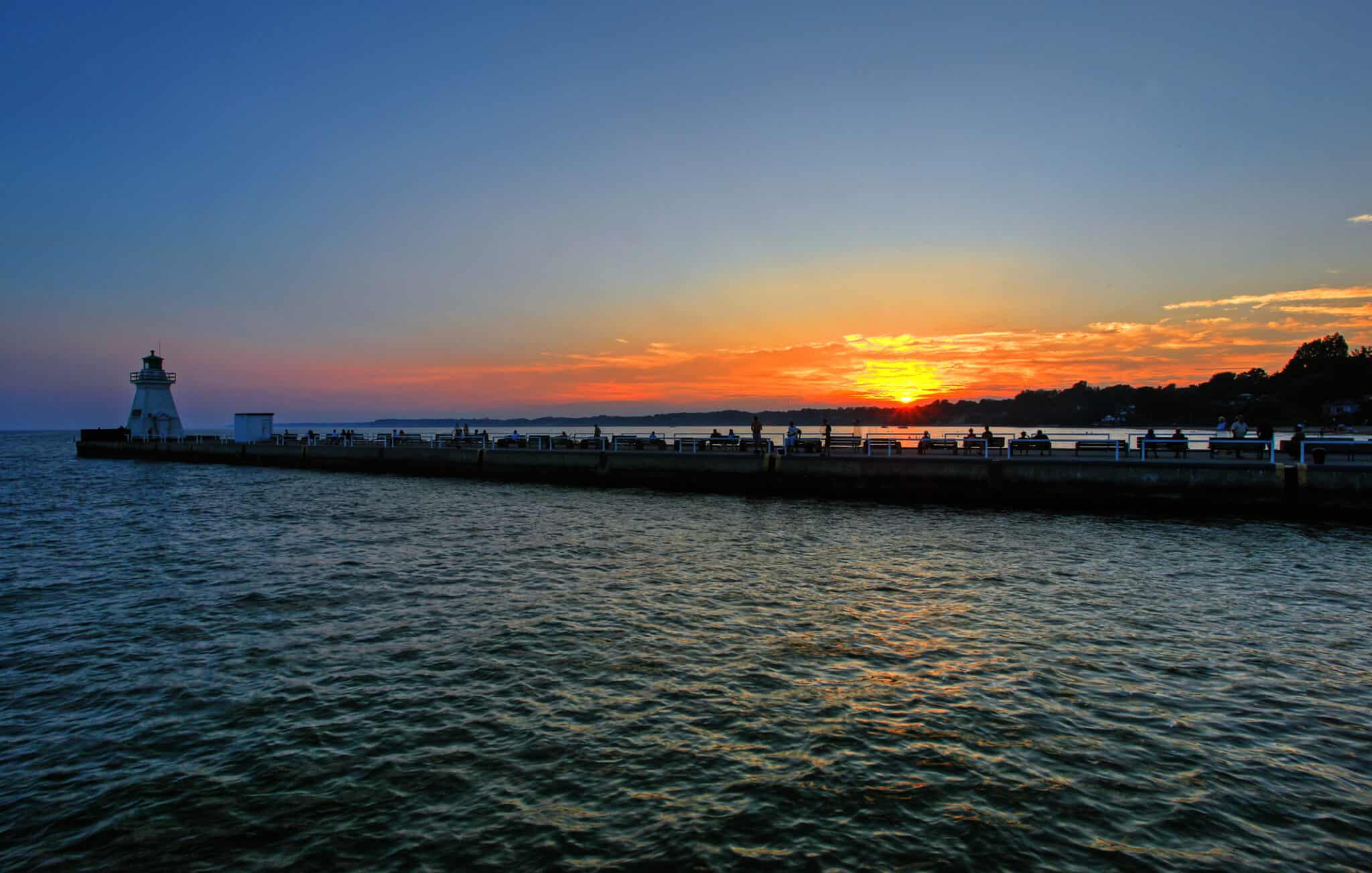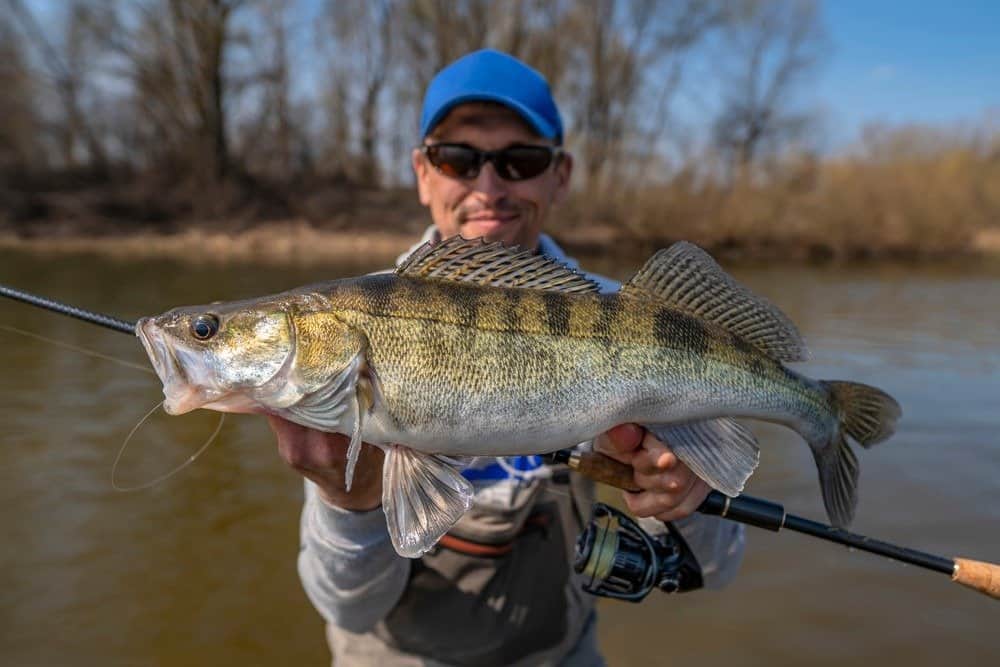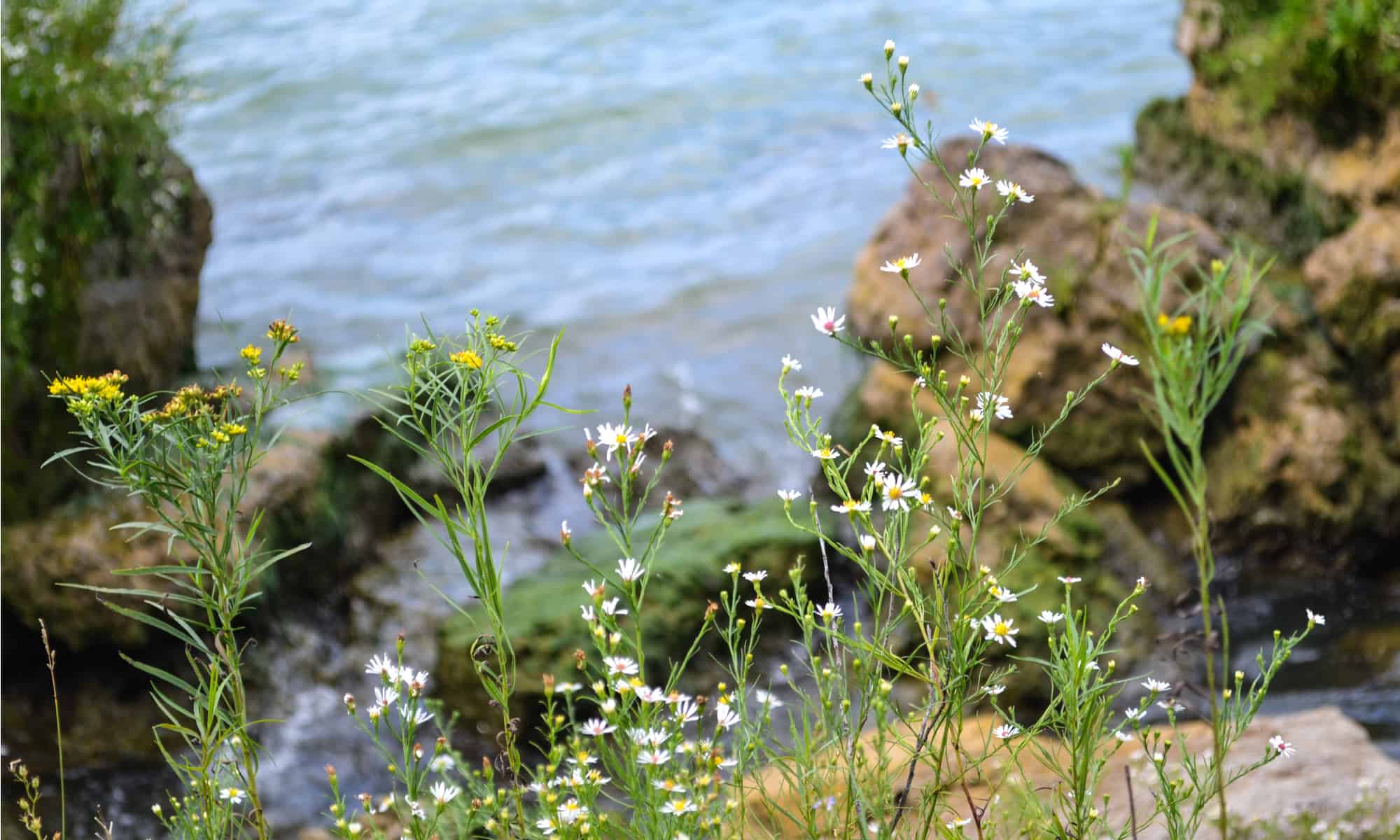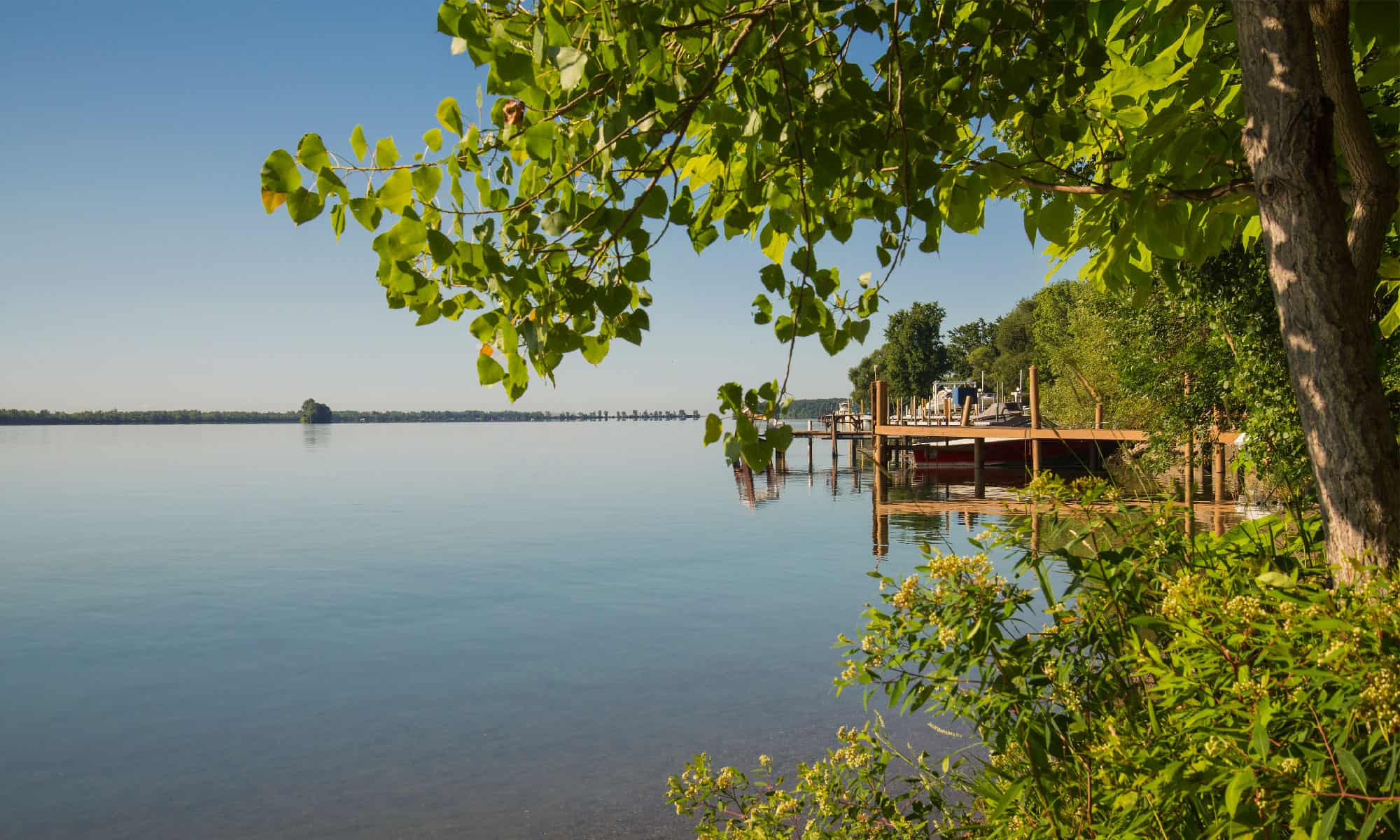Lake Erie Fishing: Size, Depth, and More


Click here to view original web page at a-z-animals.com
Lake Erie is a spectacular glacial freshwater lake that ranks fourth largest among the Great Lakes. It’s situated directly beneath Lake Huron, on the edge of the U.S. and Canada border. The glassy lake has a surface area of 25 667 square kilometers, with an average depth of 210 feet. Additionally, Lake Erie links with Lake Ontario via the Niagara River.
The lake is one of North America’s most mysterious locations because of the terrifying tales that surround it. For example, some people believe Lake Erie might be cursed due to the hundreds of lives lost in the more than 2,000 shipwrecks that have occurred there. Only 375 ships were ever found—the rest are believed to be at the bottom of the enigmatic lake. Also, a sea monster named Eerie, first spotted in 1783, is said to lurk in the dark depths of the lake.
Lake Erie also claimed hundreds of lives during the naval battle of 1813 when the British fought the United States for control over the lake, Detroit, and other territories.
Despite its mysterious reputation and sad history, the lake is a popular spot for anglers and nature lovers —in part because of Lake Erie’s rich biodiversity that includes 107 species of fish. These species include yellow perch, walleye, and white bass. Below, we’ll discuss more interesting facts about glistening Lake Erie!
Location

As mentioned, the lake is located on the terrestrial boundary between the U.S. and Canada, with the Ontario Peninsula to its north. Lake Erie’s western shore is in Michigan, while its eastern coast is in New York. Additionally, Pennsylvania is home to the southern side of the lake. Since the lake’s edge stretches over different territories, the jurisdictions of each region have set up water boundaries to divide the lake’s surface area. Major cities found along Lake Erie’s shore include Cleveland and Toledo in Ohio, as well as Buffalo, New York and Erie, Pennsylvania.
Since the lake is right below Lake Huron, the Detroit River is its primary water inlet. The lake’s outflow occurs via the Niagara River. The powerful force of the water spins the hydroelectric turbines installed near Niagara Falls to produce electricity for both the United States and Canada.
Some outflow from Lake Erie seeps into the Welland Canal, which is found near the Saint Lawrence Seaway, diverting water used for ship passages between Port Colborne on the south side of the lake and St. Catharine’s, which is situated on Lake Ontario. The outflow occurs due to a 326-foot elevation difference between Lake Erie and Lake Ontario.
History
Long before Europeans arrived at the shore of Lake Erie, Native American tribes such as the Potawatomi and Ojibwe occupied the land near the lake. One of the Native American tribes called Erie, where the lake gets its name, inhabited the southern edge of the lake. Another tribe called the Attawandaron occupied the northern shore. These tribes relied on fish from the lake as a food source. Unfortunately, both the Erie and Attawandaron tribes were conquered and eliminated by the Iroquois confederacy in 1655 during the Beaver Wars.
The war resulted in the shorelines of Lake Erie remaining uninhabited for many years because the Iroquois used the coast as their hunting ground. However, the Iroquois’ victory was short-lived because they began losing their influence in the region in the early 1700s. As a result, other Native American groups, including the Ottawa, Ojibwe, and Mingo, occupied the desolate shores.
Before the Iroquois abandoned the shores, a French explorer named Louis Jolliet discovered Lake Erie in 1669 and wrote about it, becoming the first European to reach the beach. However, it’s speculated that another European named Etienne Brule was actually the first European to sail the lake in 1615. Nevertheless, Lake Erie was the last to be discovered and explored by foreigners among all the Great Lakes because the Iroquois were hostile to traders and explorers near the region.
An engineering project dubbed the Erie Canal was initiated in 1817 in Buffalo, New York, to link territories along the northeastern shore for trade. The project was quite ambitious because the canal was designed to stretch from Albany to Buffalo and would cost about $7 million. The primary laborers on the project were Irish immigrants, and the legislative department of the state of New York financed the endeavor.
Size
Lake Erie, whose coordinates are 42.2 degrees north and 81.2 degrees west, has a 571 feet elevation above sea level. The approximate surface area of the lake is 25,874 square kilometers, with a length of 241 miles and 57 miles of breadth. During winter, Lake Erie is usually the first to freeze among the Great Lakes due to its small size. However, the lake’s southern location and depthless nature make it the warmest lake in the group.
Depth

Erie has the least volume out of all the Great Lakes because its average depth is 62 feet. The deepest point of the lake is 210 feet. Lake Erie’s shallowest area is the western basin, where the average depth ranges between 25 to 30 feet. Standing waves, known as seiches, build quickly in the water whenever a slight breeze occurs on the west bay. The powerful waves are unpredictable, making them dangerous for swimmers and boaters alike.
Lake Erie’s shallow nature proved problematic in 1999 when the waters were so warm during summer that they almost failed to cool the reactors of nuclear power plants. Lake Erie’s water temperature rose to nearly 29 degrees Celsius, the temperature limit for cooling nuclear power plants.
The lake’s drainage basin stretches for 78 100 square kilometers and is mainly fed by River Detroit, which originates from Lake St. Clair and Lake Huron. Other rivers that pour into Lake Erie’s drainage basin include:
- Cuyahoga River
- Huron River
- Grand River
- Sandusky River
- Buffalo River
- Maumee River
The western basin, which consists of roughly 20 percent of Lake Erie, is the shallowest area, with an average depth of only 24 feet. Due to the fine sediment particles at the bottom of the basin, the site is the most turbulent region on Lake Erie because the sand at the bottom is easily disturbed with every wave and wind gust.
The depth of the lake’s central basin ranges between 60 feet and 82 feet, giving it uniformity and stillness. The deepest basin on the lake is the eastern basin, whose depth varies between 80 feet and 210 feet.
Water Level and Geology
Lake Erie’s retention time, the average amount of time that water remains in a specific lake, is 2.6 years — the shortest retention time of all the Great Lakes. The water level of the lake fluctuates with different seasons. The lowest water level is observed between January and February, while the highest is between June and July.
Seiches usually cause short-term high water level changes during storms when southwesterly winds blow across Lake Erie. The fierce waves cause the lake water to pile up on the eastern side, causing damage to the shoreline. In 2003, the water level of Lake Erie in Buffalo increased by 7 feet during a storm, producing 10 to 15 feet waves that rose to 22 feet! Toledo, a shore on the opposite western side of Lake Erie, experienced an identical decrease in water level.
Fishing

Lake Erie is a freshwater lake offering one of the largest commercial fisheries globally. The lake has the most abundant fish population because of its mild temperature and warm-water climate. This provides a favorable environment for plankton growth, the primary food source for fish.
Fifty percent of fish caught in the Great Lakes come from Lake Erie. The lake acts as a habitat for hundreds of fish species, including the following:
There are a variety of invasive species in the lake as well. The invasive carp, alewife, ruffe, and hydrilla are examples of common non-native fish species that you can find in Lake Erie. The coho salmon population is again declining after failed attempts to breed it. Walleye and yellow perch comprise most of the commercially caught fish, but white bass and significant amounts of rainbow smelt are also captured.
Although various management agencies run the fishery, such as the U.S. states of New York, Pennsylvania, Ohio, and Michigan, and the province of Ontario under the direction of the Great Lakes Fishery Commission, the fishery continues to be the subject of significant criticism, mostly from anglers and government fishing businesses based in the U.S.
This complex battle began due to modifications to U.S. fisheries management in the 1960s, which resulted in the cessation of commercial fishing in most Great Lakes states.
Fun Activities on Lake Erie

If you plan to visit Lake Erie for fun activities with friends and family, you’re in for a treat! The lake is famous for its top-notch fishing, alluring lighthouses, and intimate islands such as Johnson’s Island, Little Chicken Island, Kelleys Island, Middle Bass Island, and Lost Ballast Island. Here are some of the thrilling and engaging activities that you can enjoy in Lake Erie:
Boating
You can find a boater’s paradise at Ohio’s Lake Erie Shores & Islands. The area is crammed with marinas and temporary dockage, so travelers along the lake have no shortage of locations to find excitement. It is situated on Ohio’s north coast, halfway between Toledo and Cleveland. This coastal area offers a diverse selection of historical landmarks, family-friendly attractions, breathtaking scenery, and outdoor activities.
Notable ports of call to visit include the mainland ports of Port Clinton/Catawba Island, Marblehead, Sandusky, Huron, and Vermilion, as well as the Lake Erie islands of South Bass/Put-in-Bay, Middle Bass, and Kelleys. Boaters have access to around 90 marinas, most of which provide transient dockage or mooring buoys.
The best time for boating and fishing is from mid-April until the end of October. Boaters are welcome everywhere in the area. Visitors arriving by boat can easily access major attractions like the Cedar Point Amusement Park or downtown retail businesses, thanks to marinas with transient dockage.
Camping
Another favorite activity for Lake Erie’s tourists is camping. Even though you can’t camp on the lake’s beach, lovely destinations lie nearby. For instance, you can explore Lake Erie Bluffs Campsite, a quiet, wooded camping zone with refreshing lake breezes. If the weather permits, you’ll enjoy a dramatic and lovely sunset while enjoying a panoramic view of Lake Erie as the sounds of the waves lap against the shore.
While at the camp, you can explore a nearly two-mile stretch of pristine freshwater beach where lake-smoothed stones, driftwood, and unique beach flora are strewn over the sand. You might even see the Fairport Harbor Lighthouse as you scan the beach to the west.
We also recommend checking out Camp Sandusky, which is situated on the banks of Lake Erie and is only five minutes from the Jet Express dock and 10 minutes from Cedar Point. The campsite provides Amish-built cabins, tent campsites, and RV sites.
From June 1st through the first week of October, Camp Sandusky is open. Pets are allowed in RVs, pop-up tents, and the new pet-friendly cabins at the campsite, but they are not allowed at the tent sites. The main perk of visiting Camp Sandusky is that U.S. military personnel, AAA members, and Cedar Point season pass holders receive discounts.
Other Activities
Besides boating and camping, you can also go kayaking on Lake Erie. Ensure you check out the North Coast Outpost for the perfect beach day. Also, you can access a unique water sports outfitter at Geneva State Park, on the picturesque shoreline of Lake Erie. There are rentable stand-up paddleboards, including multi-rider boards, regular boards, and kayaks, that you can use for the adrenaline-filled experience to make the most of your trip.
Alternatively, the Harbor Yak is another excellent spot for kayaking on Lake Erie. Kayaks, paddleboards, and canoe rentals are available here too. You can also book cruises on the magnificent Lake Erie and the Ashtabula River. We advise the Ashtabula River tour for individuals who prefer a less challenging ride because the calm river currents make it ideal for smooth paddling.
Experience the Wonders of Lake Erie

Lake Erie is a brilliantly blue, picturesque body of water with plenty to explore. There are countless archaeological sites to checkout, including shipwreck remains that are thousands of years old. The lake also boasts hundreds of islands, several lighthouses, and beautiful beaches perfect for relaxing or swimming.
Lake Erie’s fishing possibilities are endless. Anglers can easily catch walleye, white bass, and yellow perch.
If you’re looking to explore the depths of Lake Erie, whether it’s through swimming, boating, or fishing, you won’t be disappointed. From its rich biodiversity to mysterious tales, the lake offers adventurers a unique and exciting experience.




